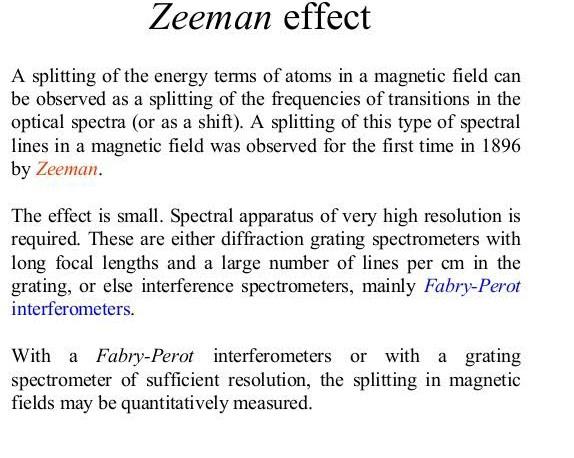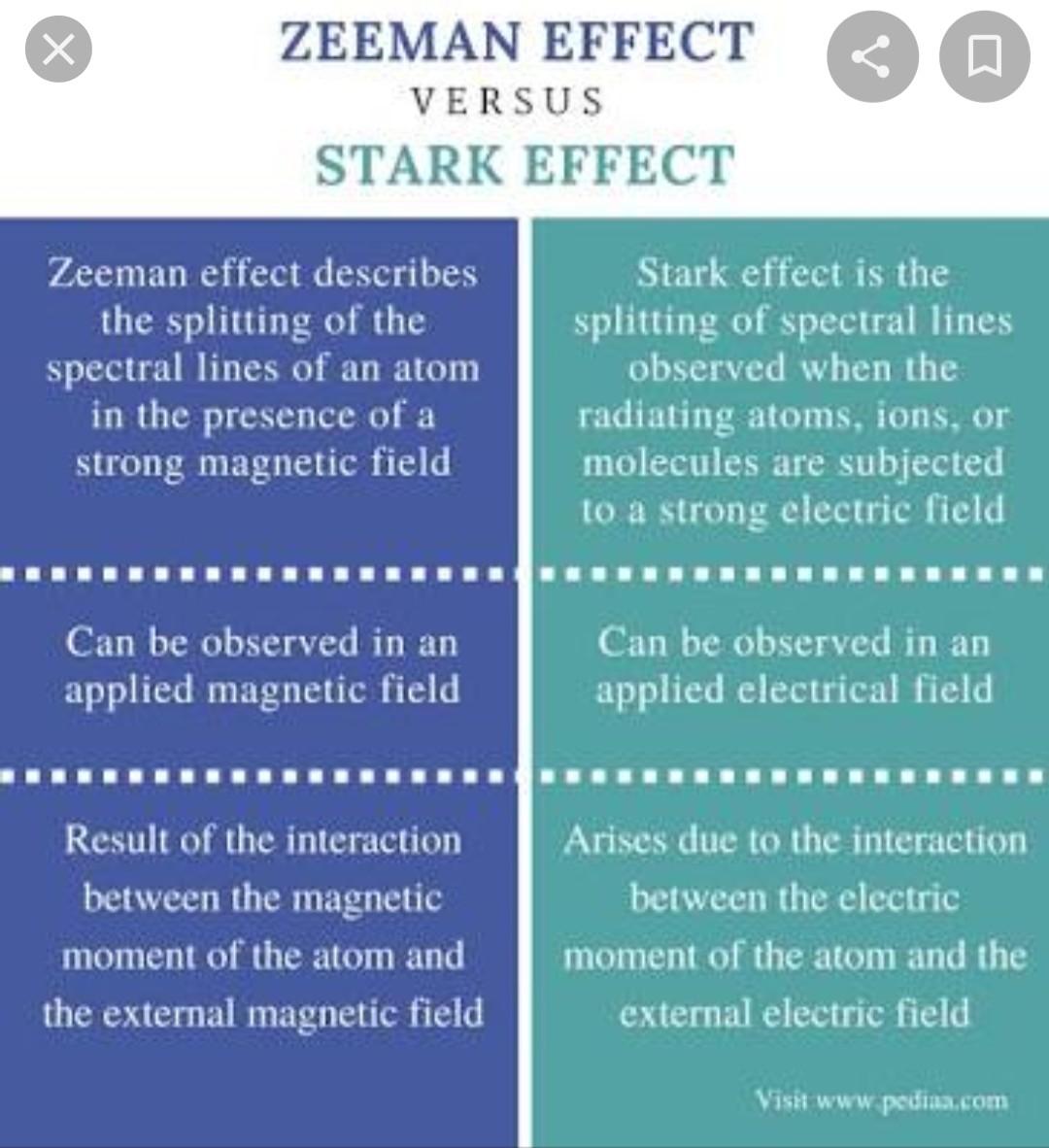Time management is very much important in IIT JAM. The eduncle test series for IIT JAM Mathematical Statistics helped me a lot in this portion. I am very thankful to the test series I bought from eduncle.
Nilanjan Bhowmick AIR 3, CSIR NET (Earth Science)Simun Mishra posted an Question
- IIT JAM
- Chemistry (CY)
Can u pls explain this and what is zeman effect and stark effect ?
- 0 Likes
- 3 Comments
- 0 Shares
-
![comment-profile-img]() >
>
-
![comment-profile-img]() >
>
Boddu rama krishna
HomeSciencePhysicsMatter & Energy Stark effect physics WRITTEN BY The Editors of Encyclopaedia Britannica Encyclopaedia Britannica's editors oversee subject areas in which they have extensive knowledge, whether from years of experience gained by working on that content or via study for an advanced degree.... See Article History Stark effect, , the splitting of spectral lines observed when the radiating atoms, ions, or molecules are subjected to a strong electric field. The electric analogue of the Zeeman effect (i.e., the magnetic splitting of spectral lines), it was discovered by a German physicist, Johannes Stark (1913). Earlier experimenters had failed to maintain a strong electric field in conventional spectroscopic light sources because of the high electrical conductivity of luminous gases or vapours. Stark observed the hydrogen spectrum emitted just behind the perforated cathode in a positive-ray tube. With a second charged electrode parallel and close to this cathode, he was able to produce a strong electric field in a space of a few millimetres. At electric field intensities of 100,000 volts per centimetre, Stark observed with a spectroscope that the characteristic spectral lines, called Balmer lines, of hydrogen were split into a number of symmetrically spaced components, some of which were linearly polarized (vibrating in one plane) with the electric vector parallel to the lines of force, the remainder being polarized perpendicular to the direction of the field except when viewed along the field. This transverse Stark effect resembles in some respects the transverse Zeeman effect, but, because of its complexity, the Stark effect has relatively less value in the analysis of complicated spectra or of atomic structure. Historically, the satisfactory explanation of the Stark effect (1916) was one of the great triumphs of early quantum mechanics.
![cropped7258728910634413962.jpg]()
-
![comment-profile-img]() >
>
![eduncle-logo-app]()
Each spectral line further splitted into the number of lines in presence of electric field and magnetic field...
![eduncle-logo-app]()
This is called stark effect and zeeman effect respectively
![eduncle-logo-app]()
This is the limitations of bohr theory that it is unable to explain this phenomenon.
![eduncle-logo-app]()
tq sir
Do You Want Better RANK in Your Exam?
Start Your Preparations with Eduncle’s FREE Study Material
- Updated Syllabus, Paper Pattern & Full Exam Details
- Sample Theory of Most Important Topic
- Model Test Paper with Detailed Solutions
- Last 5 Years Question Papers & Answers
Sign Up to Download FREE Study Material Worth Rs. 500/-










 >
>
 >
>

 >
>










Dinesh khalmaniya 1 Best Answer
The Stark effect is the shifting and splitting of spectral lines of atoms and molecules due to the presence of an external electric field. It is the electric-field analogue of the Zeeman effect, where a spectral line is split into several components due to the presence of the magnetic field.
I got it sir tq sir
not need to go deeply. because it's the part of rotational spectroscopy
ok sir